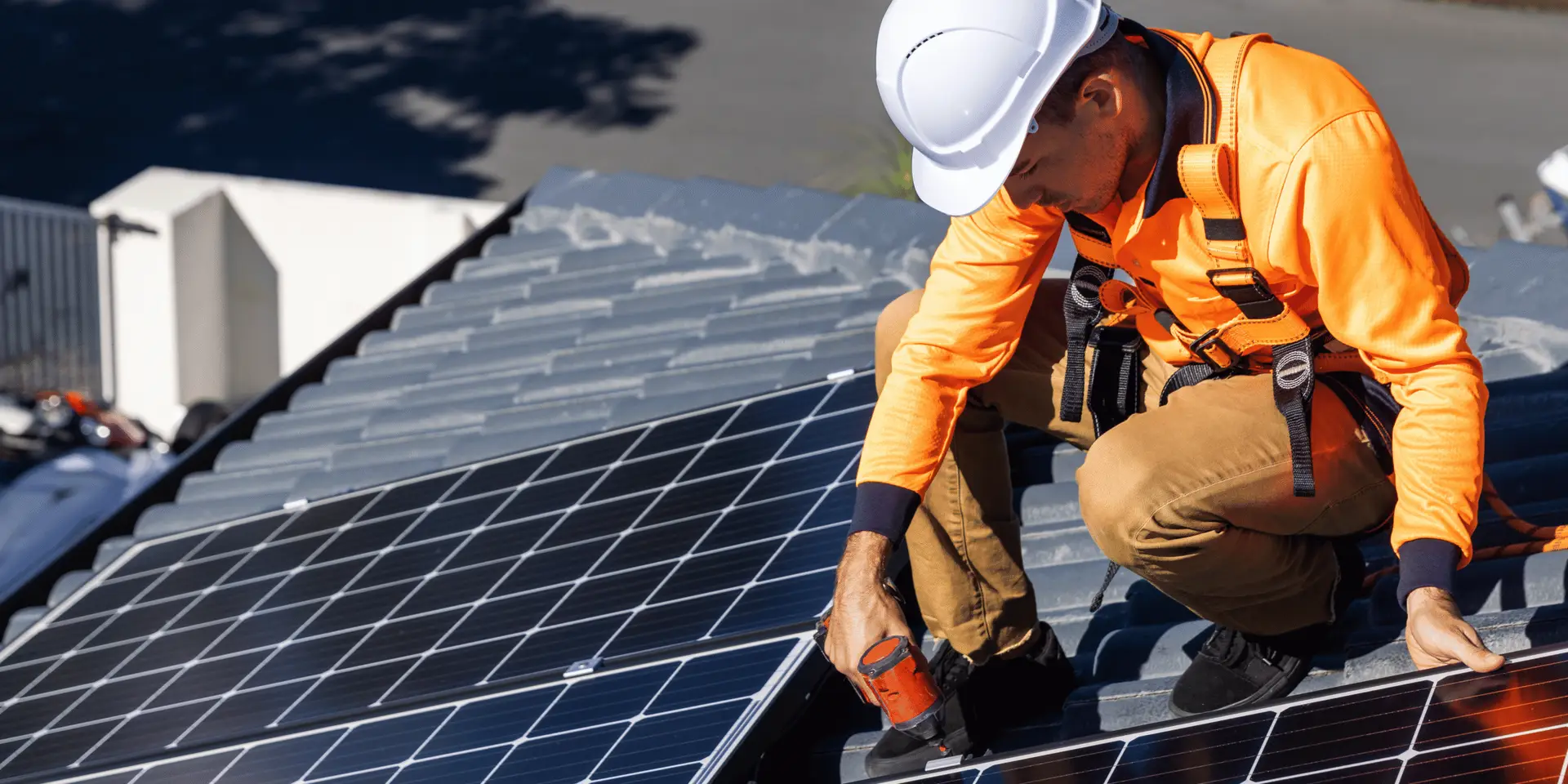The United States has been implementing one of the best renewable energy sources: solar energy. As millions of homeowners decide to use solar panels to save on electricity bills and lower their carbon footprint, a frequent question that tends to pop up is: Can hail damage solar panels?
It is a justified worry particularly in areas such as Texas, Colorado, and other midwestern states where hailstorms may occur at any time of the day and result in massive damages to property. This paper dissects all you need to know about hail and solar panels such as their durability, the tests involved, and what you can do to save your solar investment.
How Durable Are Solar Panels?
Solar panels in the modern world are designed to withstand challenging weather conditions – heavy rains and snow, heavy wind, and even hail.
Most residential solar panels consist of tempered glass that is more resilient than regular window glass. It is a high-impact resistant glass that shields the sensitive photovoltaic cells.
Solar panels are pre-tested and certified as per the international standards of durability to ensure that they can withstand harsh weather.
Hail Impact Testing Standards
In order to guarantee safety and reliability, all solar panels are subject to a hail impact test in the UL 61730 and IEC 61215 certification.
In such tests, ice balls of approximately one inch in diameter impact the panels with a speed up to 50 miles per hour. After the tests to pass certification, panels should not contain any severe cracks or performance declines.
This implies that most panels being used in the U.S. have the ability to withstand a hailstorm that has hail as large as one inch.
Real-World Evidence: How Solar Panels Perform in Hailstorms
There’s plenty of real-world data that shows how well solar panels stand up to hail.
- The National Renewable Energy Laboratory (NREL) in Colorado, which is highly susceptible to hail, observed that less than 0.1 percent of solar panels were damaged due to severe storms.
- After a major hailstorm in Denver in 2017, only one panel out of more than 3,000 at NREL’s facility was damaged, and that single panel had been hit directly by an unusually large hailstone.
These statistics prove that while hail can cause damage under extreme conditions, modern solar panels are remarkably resilient.
What Size Hail Can Damage Solar Panels?
Solar panels can withstand small and medium hailstones but extremely large hail, of a diameter more than 2 inches, may crack or break the glass.
Regions with hail that is baseball-sized, including Texas, Oklahoma, and Nebraska, are more at risk. But even in these areas, there is not much destruction of panels.
Damage usually occurs only when:
- The hail stones are abnormally huge or thick
- The storm comes with long recurrent strikes
- The panels are fitted at a level plane, hence more susceptible
What Happens If Hail Damages a Solar Panel?
In cases where hail has damaged panels, there is a tendency of leaving cracks in the surface glass. These cracks are not necessarily visible immediately but they can decrease the efficiency of the panel in due course.
With any major damage to a panel:
- Production will reduce; your solar system may generate less energy.
- The panel may be exposed to moisture, and this may cause further deterioration.
- Under wiring or cells may be destroyed and need replacement.
The positive aspect is that the current monitoring technologies enable you to easily realize when something is wrong with one or more of the panels.

Insurance Coverage for Hail Damage
Homeowners can feel comfortable knowing that hail damage to solar panels is normally covered by insurance. As panels are perceived to be a component of your home structure, the replacement and repair fees are usually covered by most standard policies.
However, it’s always smart to:
- Check your policy, and make sure that there is a coverage
- Inform your insurer upon installing the solar panels
- Record post-storm destruction with pictures
In areas where there is a high chance of hail, a solar-specific warranty or long-term protection can also be looked into to be on the safe side.
How to Protect Solar Panels from Hail
While solar panels are built tough, there are still steps you can take to minimize damage risk:
Choose Certified Panels
Always use panels with UL 61730 or IEC 61215 standard. These certifications guarantee hail testing and impact resistance of panels.
Optimal Installation Angle
Panels mounted slightly tilted (as most are) have less of a chance of being hit directly by hail. Plasticized panels are more open and thus the angle of right installation can count.
Protective Covers or Screens
Some homeowners located in extreme hail areas invest in mesh screens or automatic covering retractors. Although it is not required, they may provide an additional security measure.
Regular Inspections
Following harsh weather, have someone examine your panels (or examine them yourself) to verify that no microcracks have been formed.
Solar Panel Warranties and Hail
Hail warranties are also a category of warranty protection to most high-quality solar manufacturers.
For example:
- SunPower panels are designed to hold up to hail of up to 1 inch diameter at 50mph.
- The LG and Q CELLS panels have the same impact resistance rate.
In case of hail damage, call your installer or manufacturer. They will determine whether the damage is warranted or would be within your insurance coverage.
Are Some Solar Panels More Resistant Than Others?
Yes. Not all solar panels are created equal when it comes to durability.
Solar panels are:
- Strictly tested in terms of hail and impact resistance.
- Supported with good warranties and insurance.
- Tested to work against actual hailstorms.
The probability of severe hail damage is very low even in places where there are intense weather conditions.


